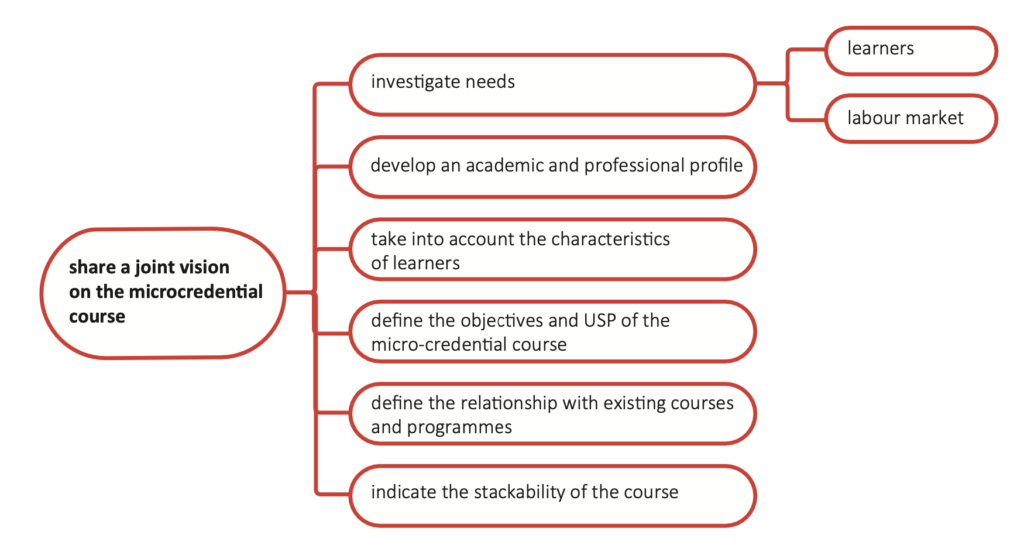
| As a first step, partners have to develop a joint educational vision for the micro-credential course, consisting of: |
|
|
|
|
|
|
Guidelines
Investigate needs
A needs assessment in the targeted academic and professional field is done on the basis of existing need studies or after consultation of stakeholders. Already at this stage, it is useful to rely on associated partners such as professional organisations, sectors and companies or public services.
During this needs assessment, it is important to hear the student’s voice. What are their needs in terms of updating knowledge, up-skilling and re-skilling, career development or challenges after a career switch? How much time can they make available for learning? How much flexibility is needed? Which mode of delivery do they prefer?
Develop an academic and professional profile
The academic and professional profile of the micro-credential course is described, based on identified social, economic and cultural needs and challenges, (multidisciplinary) research and innovation in the relevant scientific domain and the possible link with degree education.
Stackability with degree programmes is examined, as well as the contribution of the course to employability and innovation on the labor market.
The relevance and outreach of the course will benefit from involving not only academic but also labour market partners and learners in the decision-making process.
Take into account the characteristics of learners
The partnership defines the main target groups for the micro-credential course and the expected learner characteristics, including the prior knowledge needed and the motivation to improve competences for employment in certain sectors or professions.
Define the course objectives and unique selling point
The general objectives of the course are defined in economic, social and cultural terms.
The objectives of the micro-credential course are further defined from an academic point of view and its possible contribution to the innovation and competitiveness of the higher education institutions involved.
A “unique selling point” is sought for a sufficient target group in the joint partnership and beyond.
Define the relationship with existing courses and programmes.
The relationship with other continuing education and professional development offerings in the partnership is clarified. Potential collaborations are being explored. The added value of the micro-credential course compared to existing courses or programmes in the same field is explained. It also indicates the extent to which this added value contributes to university excellence.
Indicate the stackability of the course
Indicate whether the course can be stacked in a broader micro-credential or degree programme and possibly in other institutions or EUI alliances, e.g. through Erasmus+ learning agreements.
If a course is not directly stackable, it can still be recognized by a higher education institution through a procedure for the recognition of prior learning (see ECTS Users’ Guide, European Commission, 2015).
next chapter: Compose a joint micro-credential course team
previous chapter: Align with institutional and cross-institutional policies
back to overview: Models and guidelines for the design and development of
joint micro-credential courses and microlearning units in higher education
